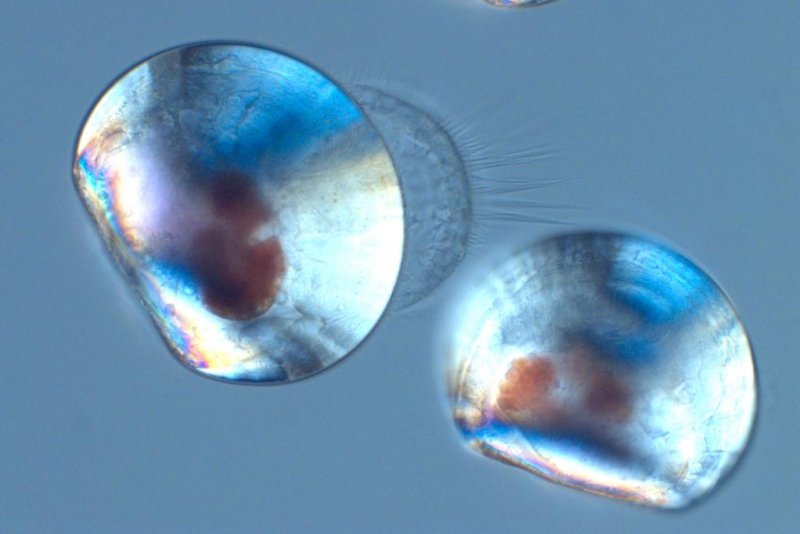Shelled mussels larvae photographed through a polarizing microscope. Photo by F. Melzner, GEOMAR
Nov. 22 (UPI) -- New research shows mussels are especially vulnerable to the ill effects of ocean acidification during their early life stages.
Mussels form a calcareous shell to protect themselves from predators. Ocean acidification disrupts this process. The latest research offered scientists new insights into the ways a decline in pH disrupts the calcification process during a mussels' larval stages.
"For the first time, we used two different methods to understand the calcification of one to two-day-old shelled larvae to estimate their sensitivity to climate change," Kirti Ramesh, a doctoral student in ecophysiology at the Helmholtz Center for Ocean Research Kiel, said in a news release. "With the help of fluorescent dyes and specialized microscopy techniques, we were able to track the deposition of calcium carbonate in living larvae and show that calcium carbonate is not formed intracellularly, as previously thought."
The new analysis -- detailed in the journal Nature Communications -- showed mussels pull calcium directly from the seawater. The calcium is carried to the shell via special proteins. Finally, at the shell, the calcium is converted into calcium carbonate.
Scientists were able to study the conversion process -- and track the movement of calcium, pH and carbonate -- using tiny glass microelectrodes.
"For the first time, we have been able to show that the mussel larvae are able to increase the pH and the carbonate concentration below the shell, which then leads to higher rates of calcification," said Frank Melzner, head of the ecophysiology working group at the Helmholtz Center. "However, with increasing acidification, the pH values below the shell also decrease, which leads to reduced calcification rates and, at very high CO2 concentrations, shell dissolution and increased mortality occurs."
Though calcification rates slow, making young mussels more vulnerable, their shells only dissolve at extremely low pH levels. The discovery suggests some organic components of the larval mussel shell helps guard against dissolution.
Researchers say their next task is to determine which proteins help carry the calcium from the seawater to the shell, as well as identify which organic components defend against dissolution. The findings could help scientist identify mussels most resistant to ocean acidification.















